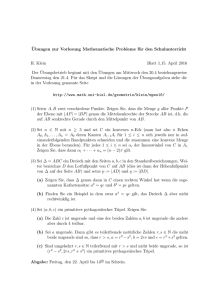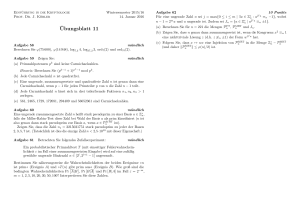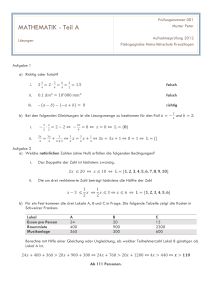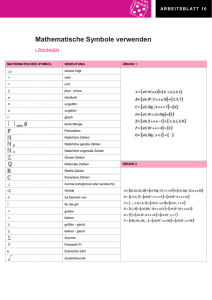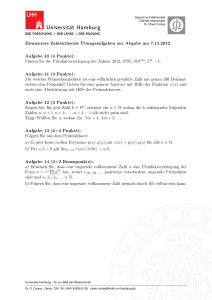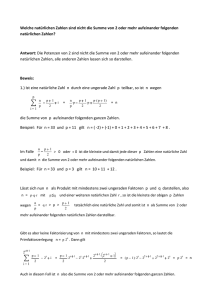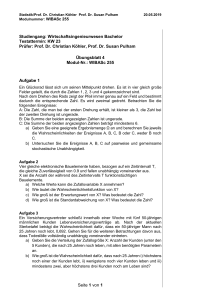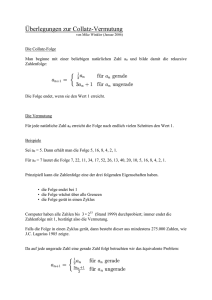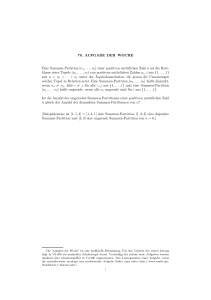Lineare Algebra WS 2012/13
Werbung
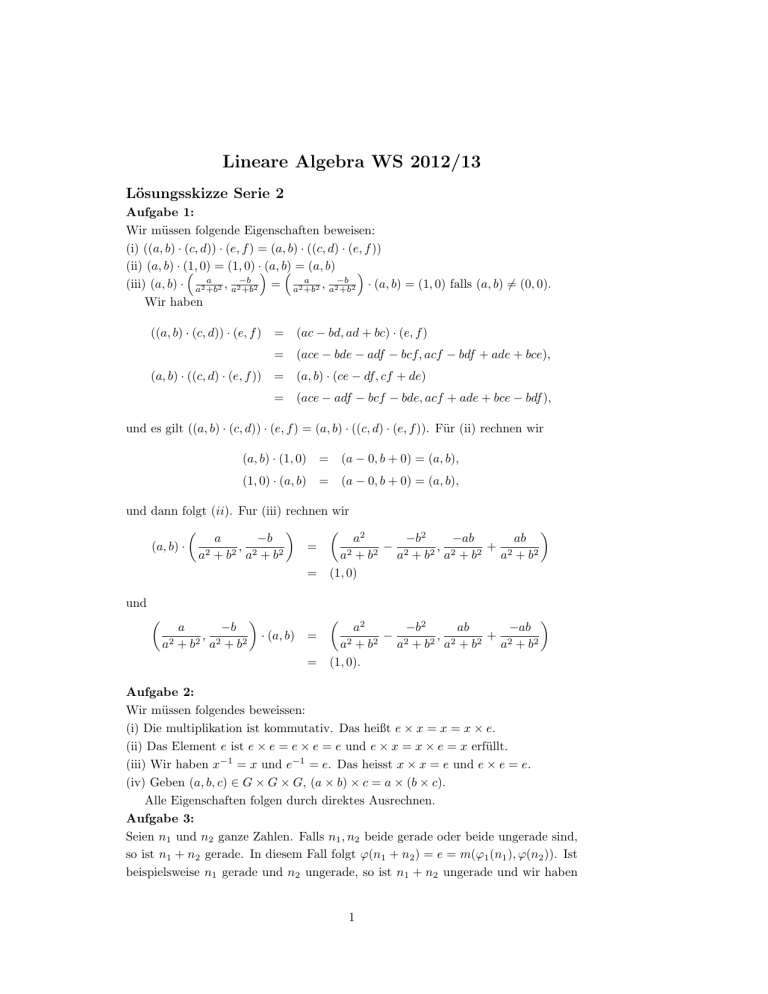
Lineare Algebra WS 2012/13 Lösungsskizze Serie 2 Aufgabe 1: Wir müssen folgende Eigenschaften beweisen: (i) ((a, b) · (c, d)) · (e, f ) = (a, b) · ((c, d) · (e, f )) (ii) (a, b) · (1, 0) = (1, 0) ·(a, b) = (a, b) a −b a −b (iii) (a, b) · a2 +b2 , a2 +b2 = a2 +b · (a, b) = (1, 0) falls (a, b) 6= (0, 0). 2 , a2 +b2 Wir haben ((a, b) · (c, d)) · (e, f ) (a, b) · ((c, d) · (e, f )) = (ac − bd, ad + bc) · (e, f ) = (ace − bde − adf − bcf, acf − bdf + ade + bce), = (a, b) · (ce − df, cf + de) = (ace − adf − bcf − bde, acf + ade + bce − bdf ), und es gilt ((a, b) · (c, d)) · (e, f ) = (a, b) · ((c, d) · (e, f )). Für (ii) rechnen wir (a, b) · (1, 0) = (a − 0, b + 0) = (a, b), (1, 0) · (a, b) = (a − 0, b + 0) = (a, b), und dann folgt (ii). Fur (iii) rechnen wir a −b a2 −b2 −ab ab (a, b) · , − , + = a2 + b2 a2 + b2 a2 + b2 a2 + b2 a2 + b2 a 2 + b2 = (1, 0) und −b a , 2 2 2 a + b a + b2 −b2 ab −ab a2 − , 2 + 2 2 2 2 2 2 a +b a +b a +b a + b2 (1, 0). · (a, b) = = Aufgabe 2: Wir müssen folgendes beweissen: (i) Die multiplikation ist kommutativ. Das heißt e × x = x = x × e. (ii) Das Element e ist e × e = e × e = e und e × x = x × e = x erfüllt. (iii) Wir haben x−1 = x und e−1 = e. Das heisst x × x = e und e × e = e. (iv) Geben (a, b, c) ∈ G × G × G, (a × b) × c = a × (b × c). Alle Eigenschaften folgen durch direktes Ausrechnen. Aufgabe 3: Seien n1 und n2 ganze Zahlen. Falls n1 , n2 beide gerade oder beide ungerade sind, so ist n1 + n2 gerade. In diesem Fall folgt ϕ(n1 + n2 ) = e = m(ϕ1 (n1 ), ϕ(n2 )). Ist beispielsweise n1 gerade und n2 ungerade, so ist n1 + n2 ungerade und wir haben 1 ϕ(n1 + n2 ) = x = m(e, x) = m(ϕ(n1 ), ϕ(n2 )). Der Fall n1 ungerade und n2 gerade ist analog. Folglich gilt stets ϕ(n1 + n2 ) = m(ϕ(n1 ), ϕ(n2 )). Aufgabe 4: Definitionsgemäß ist (a−1 )−1 × a−1 = 1 richtig. Es gilt ((a−1 )−1 × a−1 ) × a = a. Dann (a−1 )−1 × (a−1 × a) = a. Es gilt (a−1 )−1 × e = a und (a−1 )−1 = a. 2
